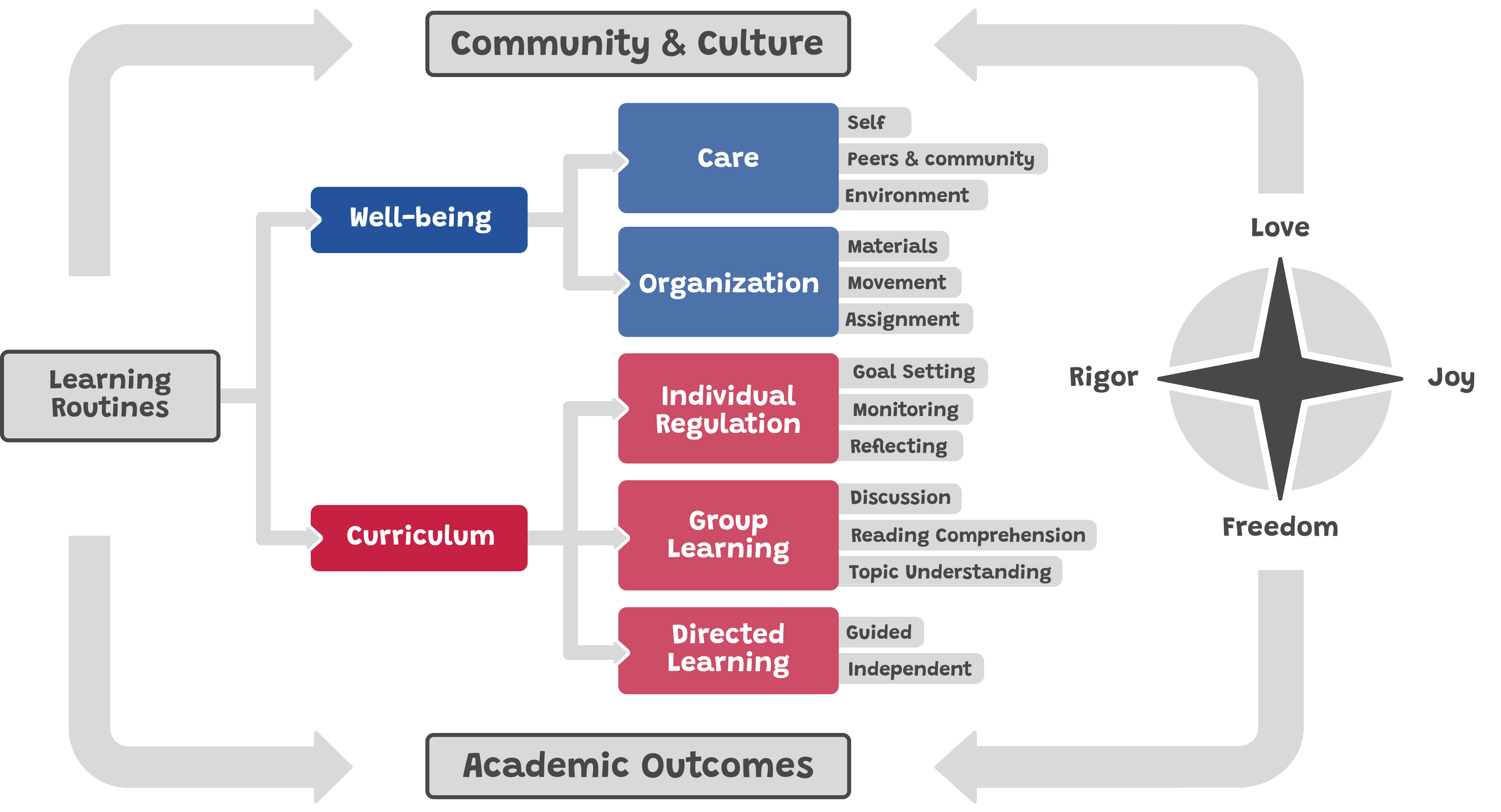Learning routines guide student thinking, collaboration, self-regulation, care for oneself and peers, and engagement with curriculum materials. They are an essential tool for effective deeper learning and are a critical component in building equitable classroom community culture. Every learning routine calls for a unique recipe of choice, help resources, and structure. By weaving together a unique set of elements, each routine is able to serve a particular set of goals and needs. We organize learning routines broadly into two goals: well-being and curriculum.

We dive deeper into each kind of routine and provide examples of each in the sections below. Click on any routine to learn more about it and access resources to help you implement it in your classroom.
Care Routines
Self-care routines invite students to take time to care for themselves. These routines help students release stress and prepare for learning.
Organization Routines
These routines help teachers and students gather and organize student responses and move into small groups for peer discussions.
Individual Regulation Routines
Individual Regulation routines prompt students to reflect on the strengths that they are bringing to each task and set concrete next steps or goals for their learning.
Group Learning Routines – Discussion
In pairs or small groups, students use these group learning routines to promote learning through discussion. The routines promote the use of academic language and accurate information and equitable engagement in discussions with peers. Students use group learning routines to elaborate on their ideas, challenge thinking and misconceptions, promote the use of academic language needed for literacy tasks, perceive peer strengths, and understand themselves in relation to their peers. Group Learning Routines can be used at any point in a lesson and require no preparation other than teaching the routine and organizing the groups.
Group Learning Routines – Reading Comprehension
Group Routines for Reading Comprehension are discussion routines that revolve around understanding a text (i.e. may include images, works of art, poems, and readings).
Group Learning Routines – Building Understanding with Primary Sources
Building topic understanding routines promote student interaction with specific curriculum content. Teachers prepare digital media including primary or historical sources, graphs, data tables, vocabulary, collections of mistakes in student work, art, poems, or news articles. Sources and collections of sources are used to introduce or investigate a topic. The routine structures prompt student self-regulated learning to promote deeper more durable learning. The routine requires the use of a source or collection of sources, either printed or digital. Each routine has both individual and group discussion components and therefore takes longer to implement during lessons. Crop It is available for use digitally and to print on paper. These routines were first developed through the Library of Congress Teaching with Primary Sources Northern Virginia Partnership. To learn more about how to use these routines into your lessons, read through our Teaching with Primary Sources Booklet.
Directed Learning Routines
These routines are designed to provide information using strategies that increase student comprehension and memory of the information. Provide information routines often include individual regulation and group learning to ensure learners acquire the needed information and are equipped to use the information in future learning tasks.

